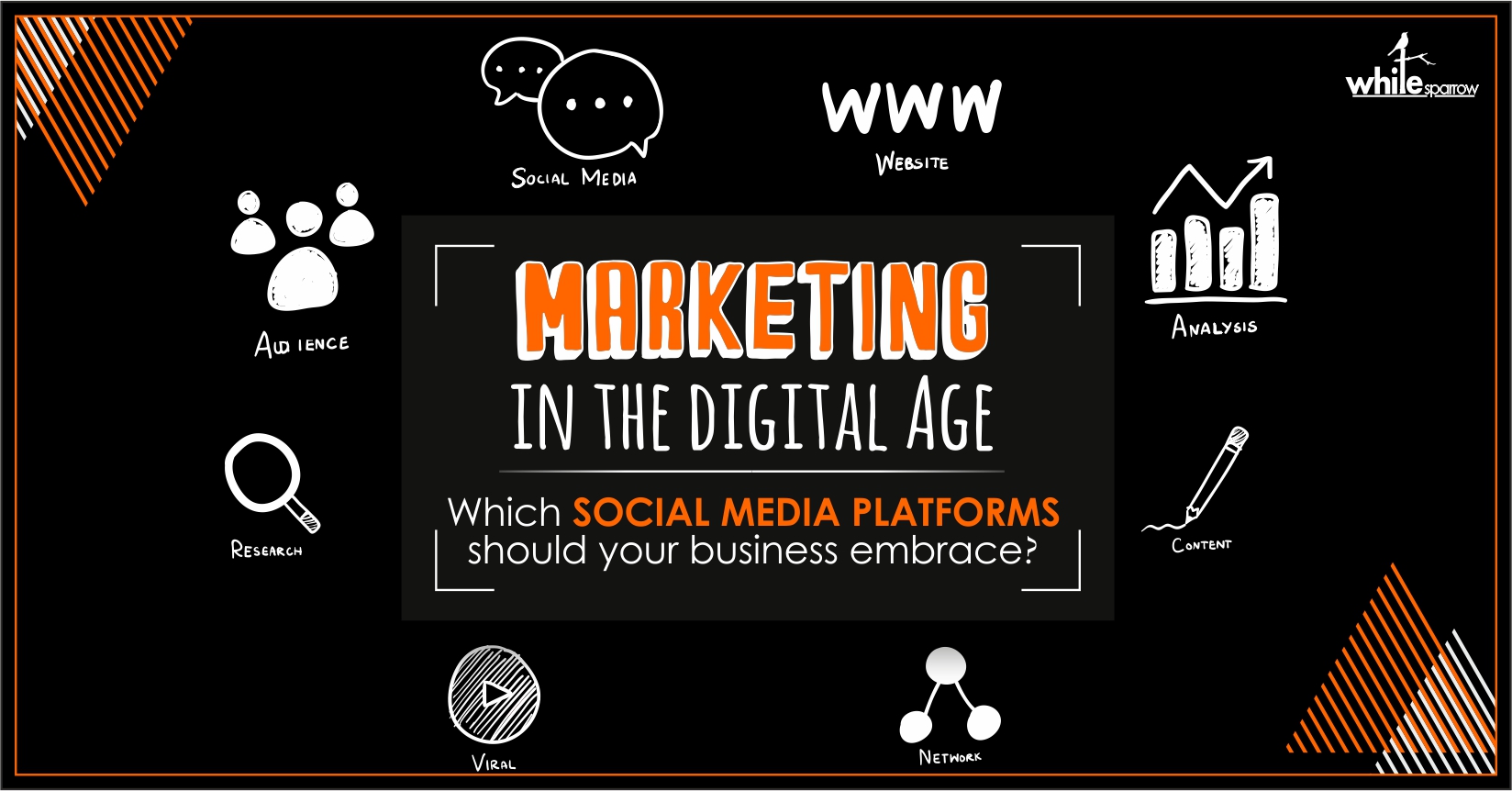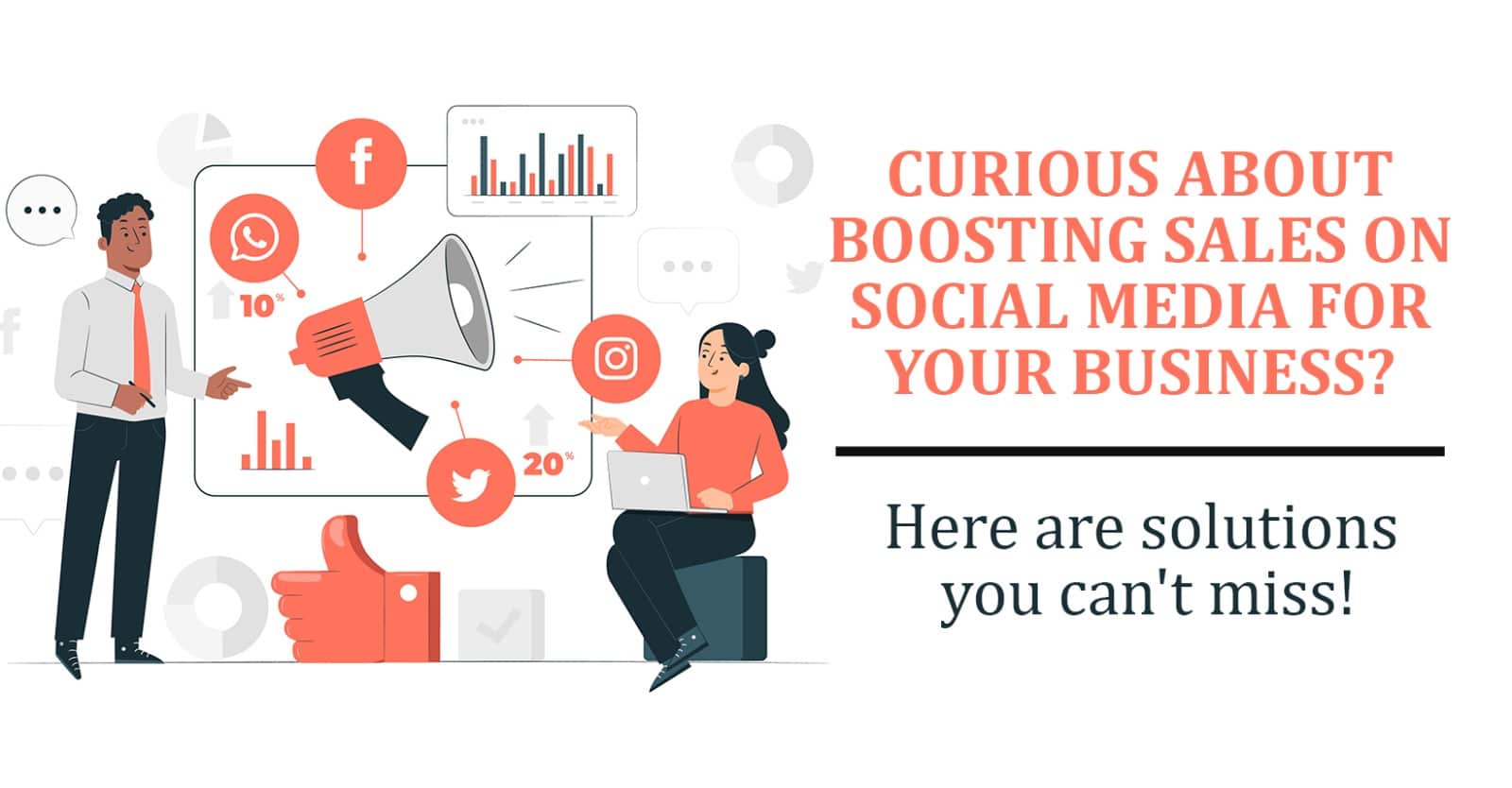Blog October 15, 2018
Marketing in the digital age: Which social media platforms should your business embrace?

Whether we’re shopping for fruits, a new outfit for a wedding or a TV set, social media has changed the way we buy things. With a one-click access to the world, it’s a great time to be a new business owner.
What are you waiting for? Weigh your options and dive right in!
Before we start talking about the best platforms to advertise your business, let us understand why a social media presence is important.
- If you are a small business that is just starting up and do not want to spend too much on traditional advertising, a foolproof social media strategy can provide good ROI at low costs.
- It gives you a direct line of communication with the potential buyers and clients of your brand. Hence, you get an instant feedback and can use it to improve your brand quality.
- Communication on social media is a two-way street. Your audience learns about your brand and you learn about your target audience- their likes and dislikes.
- Social media tools help you achieve the results you want- whether more visits on your profile or more traffic on your website.
But, this does not mean that your brand needs to be on all the social media platforms. It must be kept in mind that a weak social media strategy can be time-consuming and draining, and not all platforms are suitable for your needs.
Before you start weighing your options, there are a few things that you should underline about your brand. What kind of a business are you, B2B or B2C? What goals do you want to achieve through social media marketing? Who is your target audience?
Once you have answers to all these questions, we can now look at the various social media platforms and the kind of audience they cater to:
FACEBOOK:
As of the second quarter of 2018, Facebook has over 2.23 billion active monthly users. The Facebook audience ranges from teenagers to 55+ people all over the world. It is a far-reaching platform and a must for every business, however big or small.
Through Facebook’s targeted ad option, you can choose your target audience and area. You can also set up automated messages for the queries in your inbox, hence improving your engagement rate.
Though Facebook is now putting a squeeze on the organic reach of a page, with the right marketing instruments in your kit, you can navigate through and build a niche for your brand.
INSTAGRAM:
Instagram is a visual platform; it is a photo app where you can put aesthetic pictures of your products and target the millennials who make up a large percentage of the total Instagram users. Since it is owned by Facebook, it also has a paid advertising option where you can choose your target audience.
The catch with Instagram is that your profile (feed) needs to have original and high-quality pictures and videos. Anything that people have seen before does not resonate with them.
TWITTER:
Twitter is great for engaging new clients, especially if you’re a new business and have a big element of customer service involved.
On Twitter, you can monitor the users talking about things similar to what you offer through hashtags, and engage with them.
However, the word limit can act as a hassle sometimes.
LINKEDIN:
If your services are B2B, LinkedIn is the platform for you. It is a more professional platform. So if you’re looking to target specific businesses or job titles or sponsors or partners, LinkedIn can be a great help!
As the face of the company, the owner also needs to have a strong LinkedIn profile to establish trust, authority, and credibility with the clients or other businesses looking to work with you.
If you are a small business that is just starting, YouTube and SnapChat might not be the most feasible options. You can get into it later when you think there is enough content for a video promotion.
The thing to remember is that social media is fickle and transient. To stay on the top of the trends and all the latest news will take a lot of trial and error, patience, and consistency. Prioritize your social media platforms according to your needs, and focus on 2-3 platforms rather than dabbling with them all.






